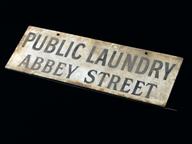

Plastic folder containing A3 sized sheets relating to the vaccination programme in NHS Region North East and Yorkshire, comprising paper cover and health service guide sheets and plastic map overlays giving information on Vaccination sites, Population density, BAME, Vulnerability and Deprivation, from the offices of NHS England at Skipton House, London, and associated with developing the strategy and monitoring the progress of the COVID-19 mass vaccination programme in England, 2020-2021.
‘Jabs in arms, not in fridges’ was the motto of the people involved in the COVID-19 vaccine roll out across England. The aim was for everyone to be within 10 miles of somewhere with the vaccine. The decision was made early that the vaccine would be delivered by the NHS, who had experience in vaccination programmes.
While the Joint Committee for Vaccination and Immunisation (JCVI) decided on priority groups based on age and key health and social workers, a huge logistical operation was needed. Led by Dr Emily Lawson from November 2020, the aim was for everyone to have as equal access as possible to COVID-19 vaccines. Work began before any vaccine was approved for use in England.
Emily brought in several NHS colleagues, and two people who worked with her on rolling out PPE and ventilators early in the pandemic: Steve Gibb, a supply chain specialist, and Army’s 101 Logistic Brigade, led by Brigadier Phil Prosser.
Not only was the roll-out about supplying vaccines, keeping them at the correct, sometimes ultra-low temperatures but everything you need to store, transport and give vaccines. There were 89 different types of products and around 340 different individual products involved. Provisions needed to be put in place for data collection, reporting, security and a nationwide booking system.
Social distancing had to be maintained while people queued for their vaccines and the mandatory 15 minute observation post-vaccine. COVID-19 hygiene standards also had to be met. Thousands of people including volunteers were needed to staff centres, to prepare and give vaccinations, book people in, take them through a health questionnaire and direct people around sites.
At first, the team looked at hospitals that had the infrastructure to support a COVID-19 vaccination centre, and Primary Care Networks or PCNs with experience in vaccinations. Mass vaccination centres in closed sporting venues, stadiums, museums, and conference centres, were set up. By mid January 2021, pharmacies, as trusted placed used by local communities, started giving vaccines. Each week new venues were added including places of worship, community centres, mobile vans, or pop-up centres.
Each of the 7 NHS England region was analysed in the same way. One map shows the 10 mass vaccination centres, 22 pharmacies, 40 hospital hubs, and 177 Primary Care Networks, giving vaccines in the North East and Yorkshire region by February 2021. Maps with data relating to inequalities impacting health showed teams about what vaccine provision was available to local communities.
Details
- Category:
- Public Health & Hygiene
- Object Number:
- 2022-1172
- Materials:
- plastic (unidentified) and paper (fibre product)
- Measurements:
-
overall: 297 mm x 430 mm x 5 mm,
- type:
- documentation




